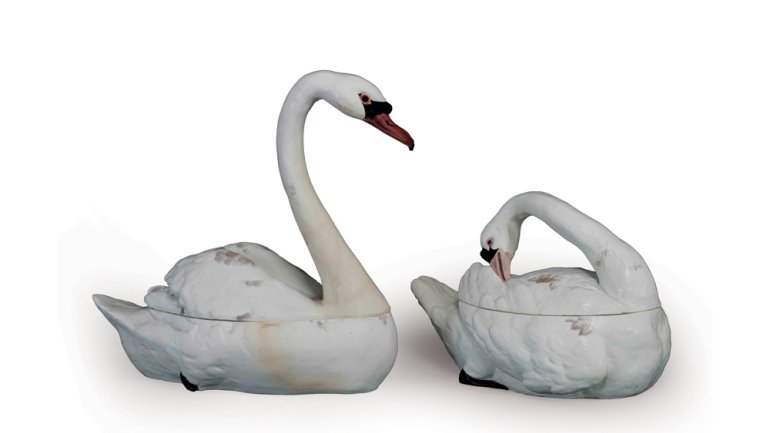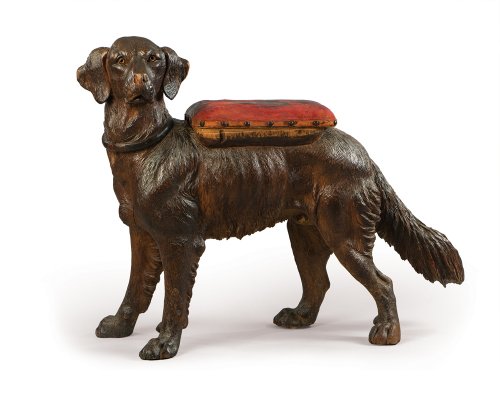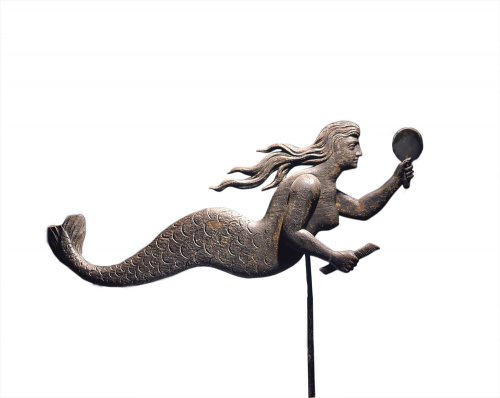Creature Comfort
Creature Comfort
For many of us, home is wherever the pets are: An American Pet Products Association survey found that 67 percent of US households have them. So it’s no wonder that over the centuries, representations of animals have adorned homes as everything from furniture to figurines, tableware to taxidermy.
The quirky permanent collection at the Shelburne Museum – its 39 structures on 45 acres house more than 100,000 objects, including decoys, dollhouses, decorative arts, and a drydocked steamboat – is a virtual ark of zoomorphic art. From that menagerie, along with loans from contemporary artists and collectors, chief curator Kory Rogers created a show that reflects the complexities of the bond between humans and animals. Like the museum itself, he says, the show is “wonderfully weird and intellectually stimulating.”
Rogers organized objects into sections by species or habitat: “Canines: Living in the Dog House”; “Felines: The Purrfect Roommates”; “Avians: Feathering the Nest”; “Sea Life: Home Aquariums”; and “Wildlife Style.” Imaginary friends have a section, too: “Cryptids: Myths and Monsters,” which covers chimerical critters such as mermaids, griffins, and furry monster chairs by the Haas Brothers.
Contemporary designer Rogan Gregory’s Noguchi-esque coffee table, which resembles a polar bear, holds down one end of the show’s abstract-to-realistic spectrum; on the other – besides actual taxidermic animals – is what Rogers calls “the crown jewels of Shelburne Museum’s decorative arts collection,” a pair of exquisitely modeled, almost life-size swan tureens that are the last of their kind made by the Chelsea Porcelain Factory in the mid-18th century.
The swans grace a table rather than sit on pedestals, suggesting their place in a long-ago home. “Because these objects are designed to enhance our domestic environments, it was important to me that they be exhibited in vignettes that evoke the feel of intimate interior spaces,” Rogers says.
The section dedicated to cats is Rogers’ personal favorite. Each object, from an Ancient Egyptian statue of a cat-headed goddess to a ceramic sleeping feline by Swedish design team Front, is “like a piece of a puzzle, providing insights into the complicated relationship between cats and humans throughout history.” Two small fin-de-siècle cat figurines, made of precious and semiprecious gems by the Peter Carl Fabergé workshop, have the distinction of being the exhibition’s most ornate objects.
The show also acknowledges the darker side of human/animal history through taxidermy, animal skins, and scrimshaw, provoking viewers to consider the righteousness – or lack thereof – in using animal parts as household decorations. And an 18th-century English earthenware jug in the shape of a bear recalls the vicious sport of bearbaiting, in which a pack of dogs would attack a restrained bear for the entertainment of spectators.
By sweet contrast, a carved gravestone for a cat endures as a symbol of the emotional bond between the pet and those who cherished it.
Rogers, who has no pets himself, says he would love to have a grumble of pugs, but his husband isn’t on board yet. “I’m slowly eroding his resistance by bombarding him daily with cute pug screengrabs from Instagram,” he says. “Cross your fingers.”






